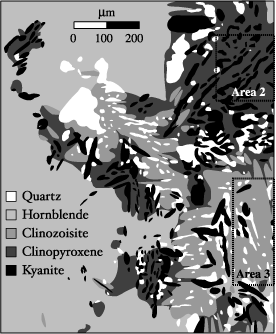Publications
° Daczko, N.R., Stevenson, J.A., Clarke, G.L. and Klepeis, K.A. 2002. Successive hydration and dehydration of a high-P mafic granofels
involving clinopyroxene-kyanite symplectites, Mt Daniel, Fiordland, New
Zealand. Journal of Metamorphic Geology, 20, 669-682.
Abstract
Three texturally distinct symplectites occur in mafic granofels of the Arthur
River Complex at
Mt Daniel, Fiordland, New Zealand. These include symplectic intergrowths
of clinopyroxene and
kyanite, described here for the first time. Pods of mafic granofels occur
within the contact aureole of the Early Cretaceous Western Fiordland Orthogneiss
batholith. The pods have cores formed entirely of garnet and clinopyroxene,
and rims of pseudomorphous coarse-grained symplectic intergrowths of hornblende
and clinozoisite that reflect hydration at moderate to high-P. These hornfelsic
rocks are enveloped by a hornblende–clinozoisite gneissic foliation (S1).
Narrow garnet reaction zones, in which hornblende and clinozoisite are replaced
by garnet–clinopyroxene assemblages, developed adjacent to fractures and
veins that cut S1. Fine-grained symplectic intergrowths of (1) clinopyroxene
and kyanite and (2) clinozoisite, quartz, kyanite and plagioclase form part
of the garnet reaction zones and partially replace coarse-grained S1 hornblende
and clinozoisite. The development of the garnet reaction zones and symplectites
was promoted by dehydration most probably following cooling of the contact
aureole. Maps of oxide weight percent and cation proportions, calculated
by performing matrix corrections on maps of X-ray intensities, are used to
study the microstructure of the symplectites.

|
 ARC Centre of Excellence for Core to Crust Fluid Systems
ARC Centre of Excellence for Core to Crust Fluid Systems